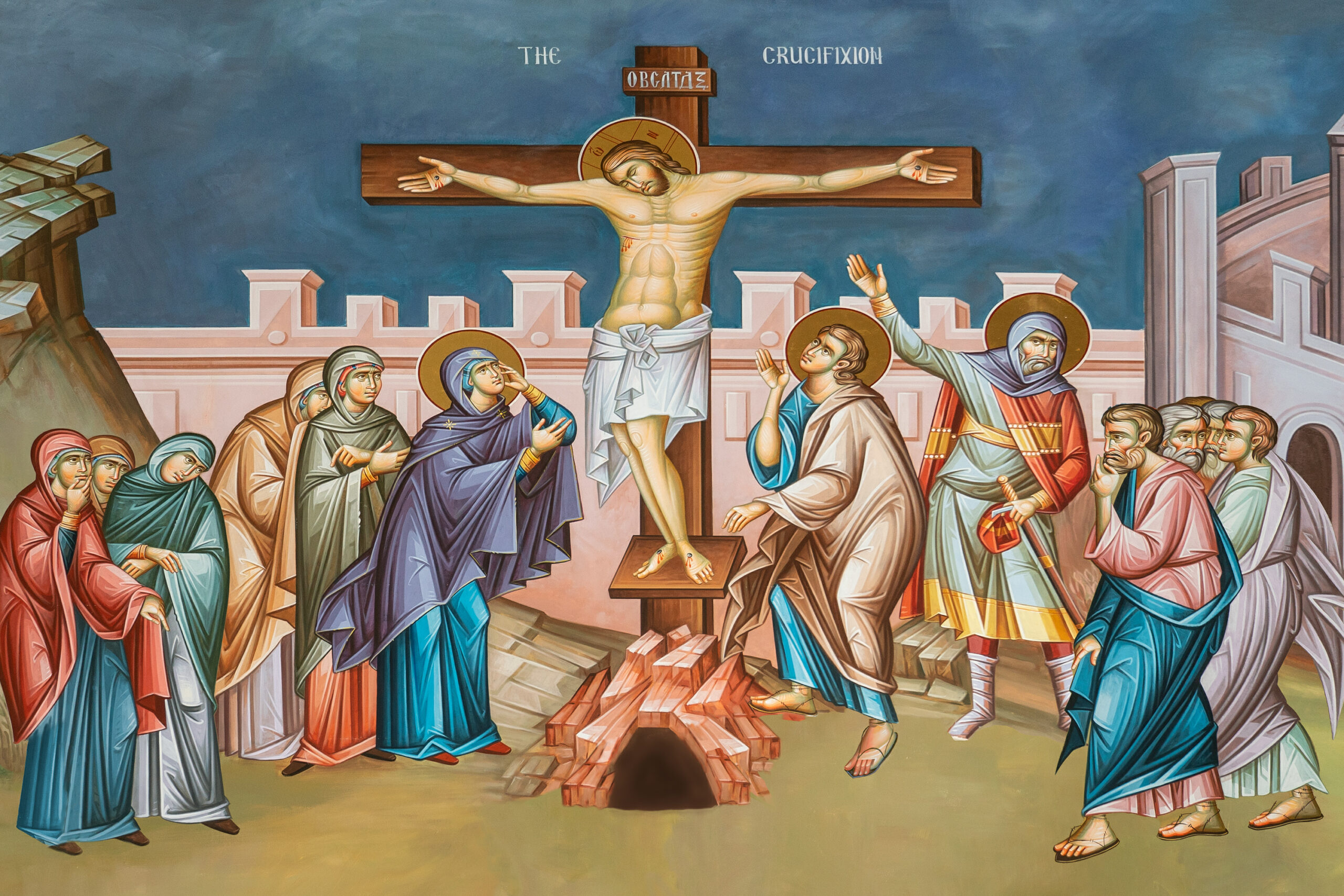Kenosis is a Greek word meaning “emptiness,” often used as a theological term. The ancient Greek word κένωσις (kénōsis) translates to “emptying,” derived from κενός (kenós), meaning “empty.” While the word has various interpretations, it is primarily used in a Christian theological context.
The precise meaning of kenosis differs among theologians. One interpretation is that Jesus emptied himself of personal desires, becoming entirely receptive to God the Father’s divine will, even to the point of death on the cross. This view encourages Christians to adopt a similar humility, submitting to divine will regardless of personal cost. Others interpret kenosis as Jesus voluntarily limiting the use of his divine powers to fully experience mortality. This suggests that Jesus did not exploit his divine nature to escape human suffering. Marcionite kenosis embraces both perspectives: the nature of Christ and the transcendence achieved through self-emptying.
Throughout history, theological perspectives on Jesus’ nature have varied. Adoptionists believed Jesus was fully human but was uniquely honored and exalted by God. In contrast, Docetists viewed Jesus as entirely divine, appearing only as a spiritual apparition without human substance. The Catholic Church ultimately established the doctrine that Jesus possessed a dual nature—both fully human and fully divine, born of a virgin on Earth.
Marcionites, like Catholics, adhere to Dyophysitism, the belief that Jesus Christ is one person of one substance and one hypostasis, possessing two distinct yet inseparable natures: divine and human. Marcion of Sinope emphasized both the unity of Christ and the reality of his twofold existence in Ephesians 5:8:
“There is one only physician, of flesh and of spirit, generate and ingenerate, God in man, true Life in death, Son of Man and Son of God, first passible and then impassible, Jesus Christ our Lord.”
Marcionite Kenosis and Christ’s Humanity
Where Marcionites diverge from Catholic doctrine is in their belief that while Jesus took on the appearance and form of a human, he was never fully human. This perspective is reflected in Philippians 2:5-8:
“Let this mind be in you, which was also in Christ Jesus: Who, being in the form of God, thought it not robbery to be equal with God: But made himself of no reputation, and took upon him the form of a servant, and was made in the likeness of men: And being found in fashion as a man, he humbled himself, and became obedient unto death, even the death of the cross.”
The Apostle Paul further explains in Philippians 2:12:
“Wherefore, my beloved, as ye have always obeyed, not as in my presence only, but now much more in my absence, work out your own salvation with fear and trembling.”
This passage suggests that while salvation is granted through Jesus, Christians should live as if they have yet to attain it, practicing humility and reverence. Paul continues this theme in Philippians 2:10-15, urging believers to adopt the mindset of Christ in their spiritual journey:
“That at the name of Jesus every knee should bow, of things in heaven, and things in earth, and things under the earth; And that every tongue should confess that Jesus Christ is Lord, to the glory of God the Father. Wherefore, my beloved, as ye have always obeyed, not as in my presence only, but now much more in my absence, work out your own salvation with fear and trembling. For it is God which worketh in you both to will and to do of his good pleasure. Do all things without murmurings and disputing: That ye may be blameless and harmless, the sons of God, without rebuke, in the midst of a crooked and perverse nation, among whom ye shine as lights in the world…”
Unlearning Catholic Kenosis
To understand Paul’s teachings on kenosis, it is essential to separate them from the Catholic doctrine of the Incarnation. Marcionite theology asserts that all authentic Pauline epistles are Marcionite, not Catholic. Attempting to interpret Marcionite doctrine through a Catholic lens is akin to reading the Quran as Christian scripture, forcing an incompatible theological framework onto its teachings.
Marcionite kenosis emphasizes humility and service rather than aspiring to the divine essence. By prioritizing the needs of others and adopting a humble attitude, one unites with God through grace—a concept known as the “Kenotic Ethic.”
Kenosis, then, is both a paradox and a mystery: by emptying oneself, one becomes filled with divine grace and achieves union with God. In Marcionite theology, kenosis involves transcending worldly concerns and detaching from material passions.
Kenosis and the Humanity of Jesus
Jesus conducted himself as if he were fully human—an act of humility that allowed him to serve humanity. Complications arise only when non-Pauline doctrines are introduced. Some Catholics may interpret the Marcionite view that Jesus “acted as if” he were human as deception or as a denial of his physical existence. However, kenosis represents humility, not deceit.
A helpful comparison lies in Catholic Eucharistic theology. According to both Catholic and Marcionite doctrine, the Eucharist is the body and blood of Jesus, though it appears as bread and wine. This is not an act of deception but one of humility. In the same way, Jesus appeared as human while remaining divine. This concept might be called the “Kenosis of the Eucharist.”
Overcoming Doctrinal Biases
The primary obstacle in understanding kenosis is doctrinal bias. Catholic dogma holds that Jesus was both fully God and fully man, born to a virgin in Bethlehem. Since Paul’s writings are included in the Catholic canon, Catholics must also interpret his teachings to align with this doctrine. However, Paul’s words suggest otherwise. In Colossians 2:10, he states:
“…the head of all principality and power:”
Jesus, though a preexisting divine being, voluntarily humbled himself to experience human life. While he retained the ability to perform miracles and teach moral doctrine, he did not rely on divine power to alleviate his struggles. He ate, slept, sweat, bled, and experienced real pain. Paul describes Jesus as being “made in the likeness of men” rather than stating outright that he was fully human. If Paul had meant that Jesus was a literal human, he would have said so explicitly.
If Paul had claimed that Jesus was merely human, as the Adoptionists asserted, one could argue that his humility was simply an act. However, Paul’s words suggest that Jesus’ likeness to humanity was not absolute but rather a necessary adaptation to fulfill his divine mission.
Conclusion
Marcion of Sinope taught precisely as Paul did. This was the original Christian orthodoxy, upheld until the late second century. When the spirit of Jesus dwells within believers, their flesh becomes his body. Those in Christ Jesus have symbolically died on the cross, living not in the flesh but in the spirit. This is how Jesus descended from heaven to connect with humanity. More than just a teacher or friend, he lives within believers, and they dwell in him.



